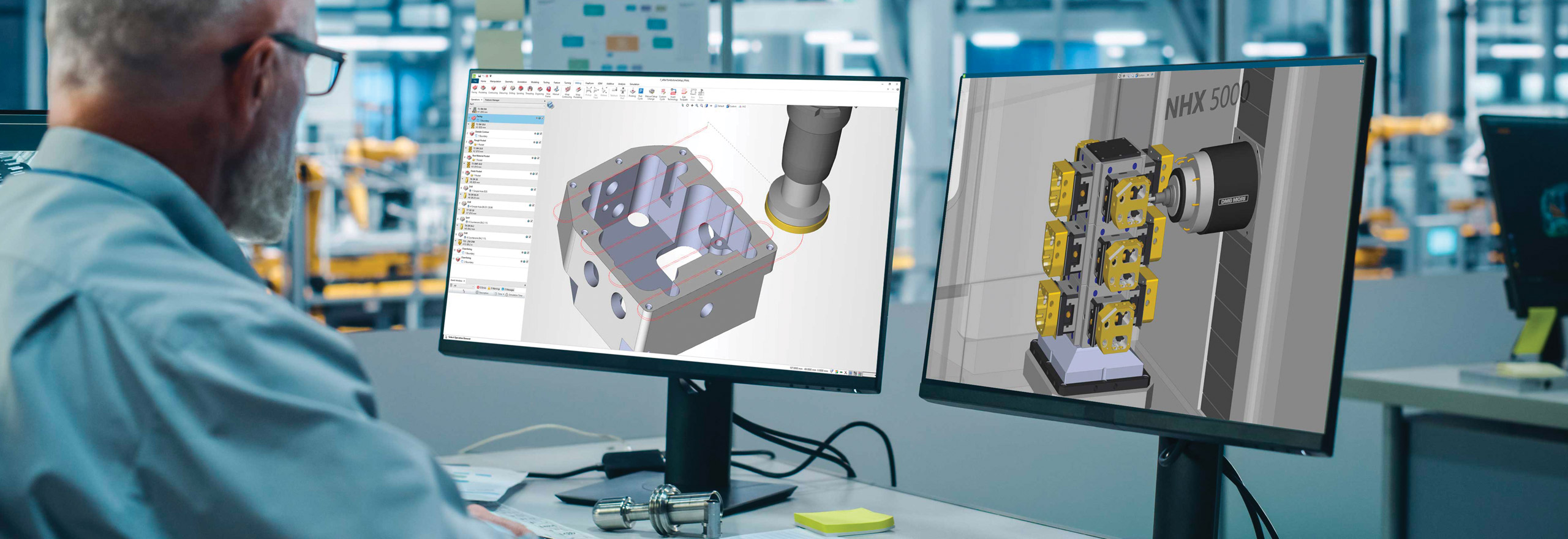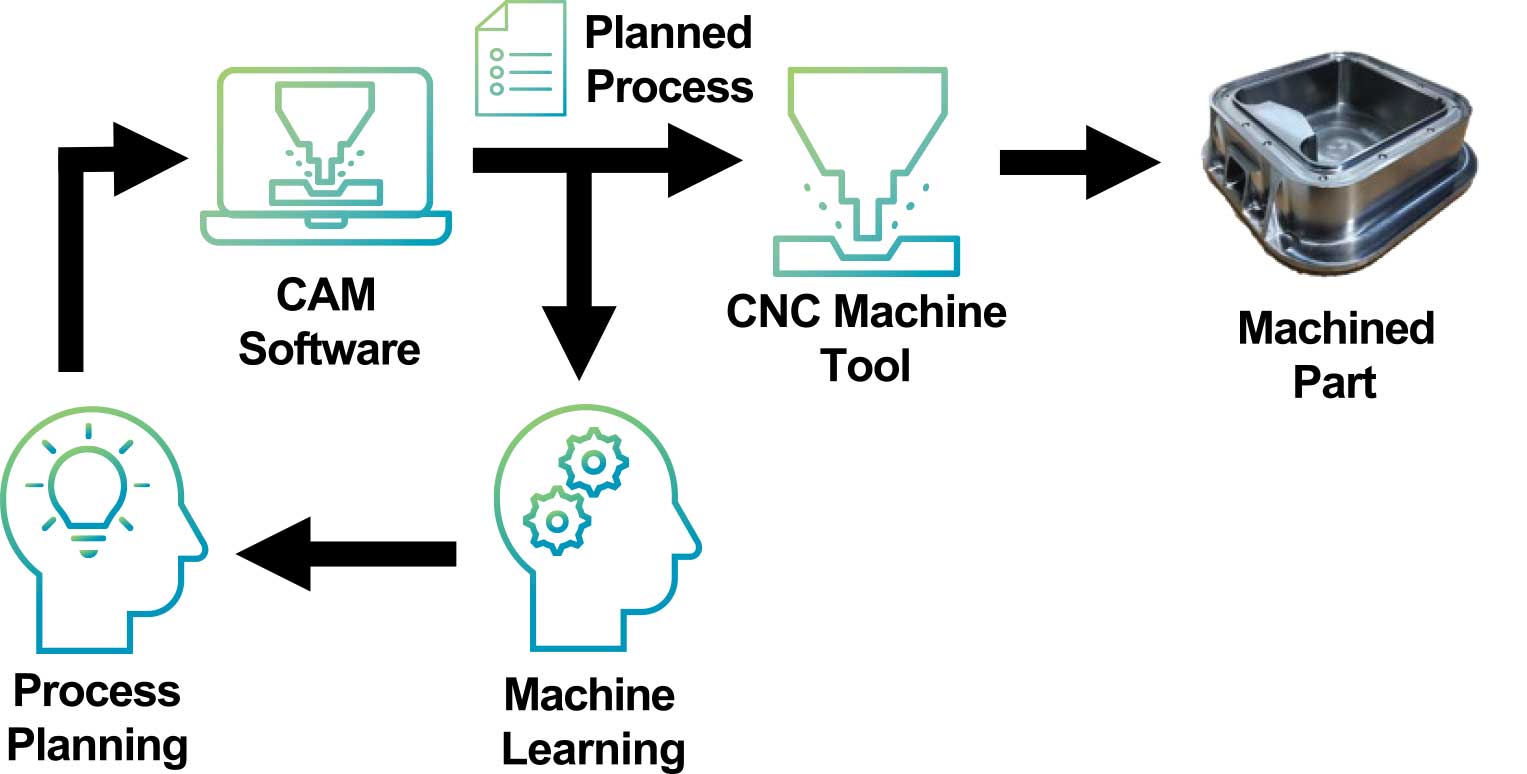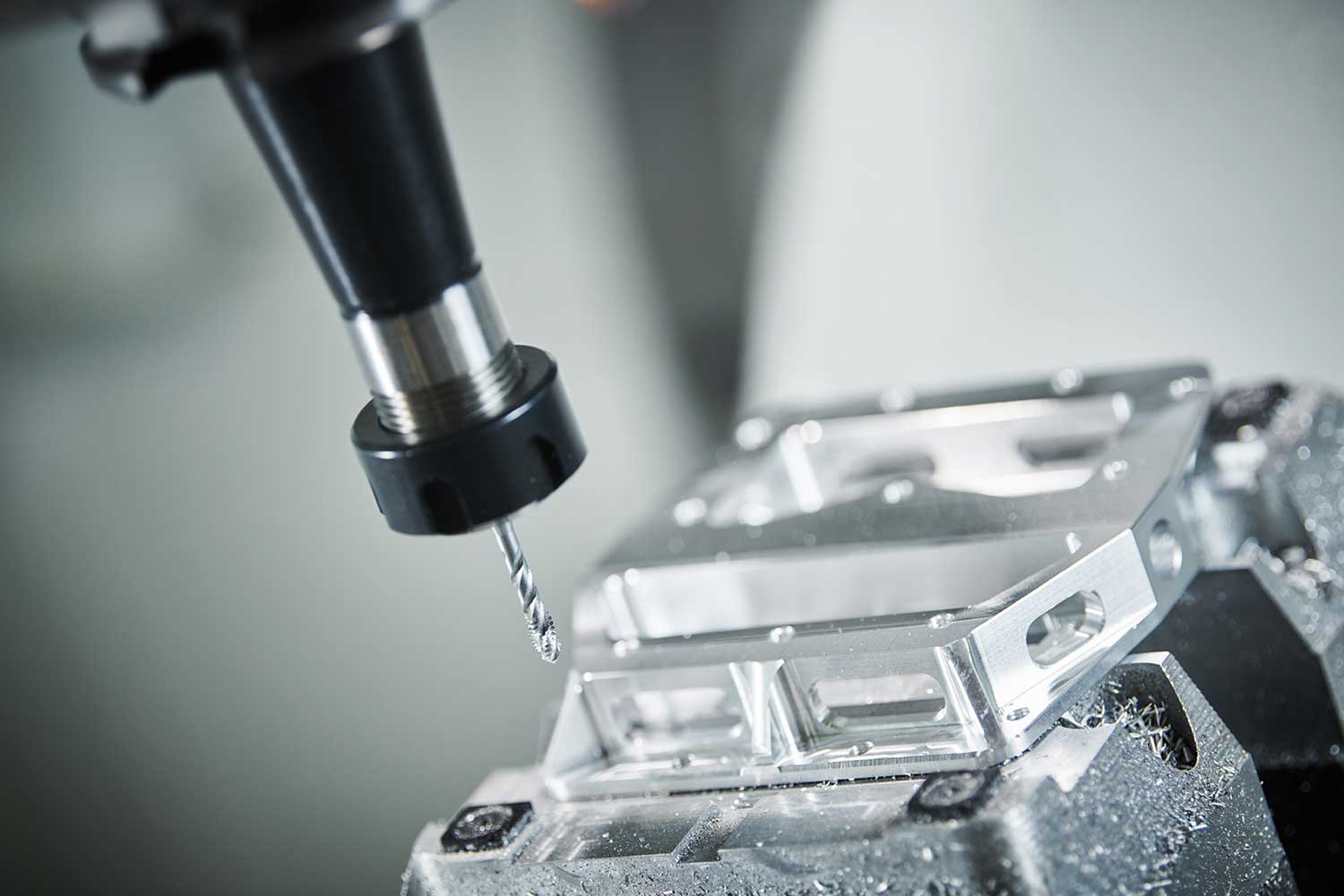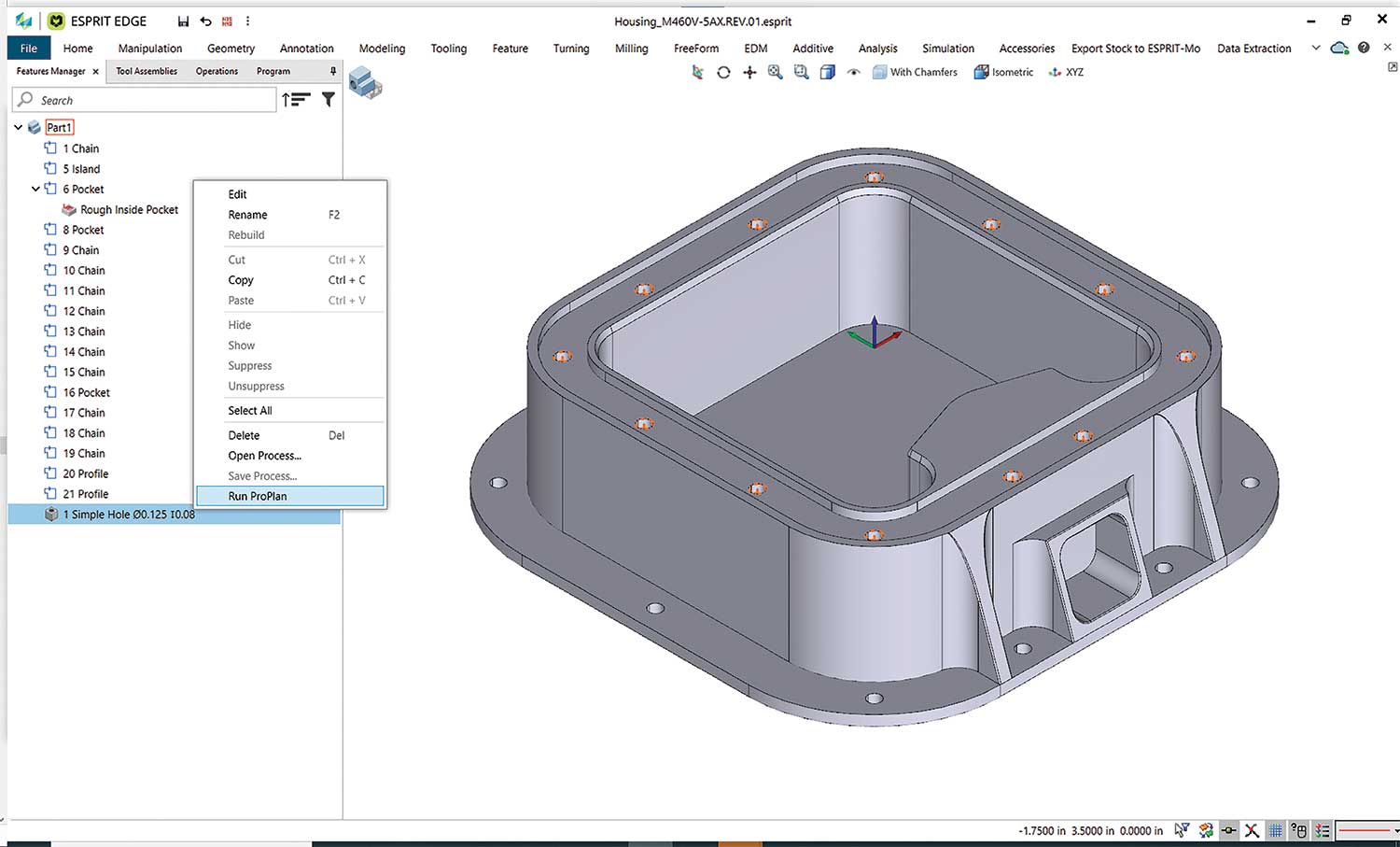툴패스로 가는 더 빠른 경로
새로운 인공 지능 기술은 CAM 프로그래밍 진화의 다음 단계입니다. 헥사곤 매뉴팩처링 인텔리전스 사업부 제품 관리자 Ryan Pembroke

엔지니어링 리얼리티 2024 볼륨 1
스마트 제조 가속화
인더스트리 4.0의 특징 중 하나는 다양한 형태의 자동화가 제조 워크플로우의 중심이 되고 있는 것입니다. 부품 설계 및 프로그래밍의 자동 피처 인식부터 검사용 부품을 로딩하는 로봇에 이르기까지 부분 또는 전체 프로세스를 점진적으로 자동화할 때의 이점은 기하급수적으로 누적됩니다.
컴퓨터 보조 제조(CAM) 소프트웨어가 제공하는 자동화 기능에 있어서 주요 관심은 역사적으로 규칙 기반 자동화(RBA)였습니다. CAM 소프트웨어가 직원의 개입 없이 프로그래밍 결정을 내릴 수 있도록 하여 인간의 지식을 포착하고 적용하도록 개발된 RBA는 제조업체가 지정한 프로그래밍 시나리오 지침을 사용합니다. RBA는 제조업체가 모범 사례를 적용하는 데 도움이 되기도 했지만, 공작기계의 복잡성이 계속 높아지고, 새로운 재료가 나타나고, 비즈니스 요구가 진화함에 따라 본질적으로는 회사가 자체적으로 구현하고 유지하기가 어려운 경직된 자동화 도구이기도 합니다.
헥사곤은 제조업체가 제도적 지식을 보다 빠르고 쉽고 철저하게 적용할 수 있도록 컴퓨터 지원 프로세스 계획에 인공 지능(AI)을 활용함으로써 CAM 프로그래밍 자동화의 진화의 다음 단계를 이끌었습니다. 헥사곤의 ProPlanAI는 헥사곤의 클라우드 기반 협업 도구인 Nexus를 기반으로 하는 새로운 자동화 기술을 제공합니다.

규칙 깨기
지식 보존은 재료 유형, 표면 마감, 피처 특성 및 기타 요소를 기반으로 프로그래밍 규칙을 적용할 수 있는 RBA의 개발에 필수적입니다. 그러나 시간 소모적이고 실행이 힘들 뿐만 아니라 제조 시나리오에 약간의 차이만 있어도 자동화를 일관되게 사용하기가 어렵습니다. 프로그래밍 자동화를 위한 새로운 머신 러닝 도구를 사용하면 은퇴하거나 퇴직하는 제조 직원의 지식을 더 쉽게 적용할 수 있습니다.
ProPlanAI는 조건부 문장으로 구성된 지침을 사용하는 대신 이상적인 프로세스의 빌딩 블록으로 기존 CAM 프로그램을 사용합니다. RBA 규칙을 생성하려면 사용자가 지정하면 됩니다. 예를 들어 구멍의 직경이 1인치이고 깊이가 1인치일 때 특정 드릴링 프로세스를 사용하도록 지정하는 것입니다. 반면에 구멍의 직경이 1/2인치이고 깊이가 2인치인 경우 다른 드릴링 공정을 사용해야 합니다. 어느 경우든 사용자 또는 사용자가 고용한 CAM 벤더는 일반적으로 이처럼 구체적인 규칙을 수립할 책임이 있습니다.
머신 러닝을 통해 제조업체는 이전의 검증된 CAM 프로그램에서 수집한 기존 프로그래밍 데이터를 사용하여 과거 작업에서 얻은 지식을 적용할 수 있으며, 한정적인 시나리오에만 해당하는 특정 규칙에 의존할 필요가 없습니다. ProPlanAI는 소수의 작업 또는 수백 또는 수천 개의 과거 시나리오에서 제도적 관행을 학습할 수 있으며 현재 작업에 꼭 맞는 검증된 제조 레시피를 거의 즉시 식별할 수 있습니다.
데이터를 실무에 활용하기
모든 과거 프로그래밍 정보를 활용할 수 있는 능력은 ProPlanAI의 가장 큰 장점일 수 있습니다. ProPlanAI는 개별 제조 회사의 제도적 지식과 관행을 반영하는 전략을 자동으로 선택하기 때문입니다. 반복적으로 동일한 다양한 부품을 생산하는 대규모 작업장은 RBA의 이점을 더 쉽게 얻을 수 있지만, 일관되게 사용할 수 없는 자동화를 구현했을 때 얻을 수 있는 가치는 알지 못합니다. 대규모 제조업체와 작업장 모두가 AI로 구동하는 프로그래밍 자동화를 사용하면 이점을 얻을 수 있는데, 이 자동화는 이미 생산하고 있는 데이터의 누적을 활용하고 구현에 별도의 기초 작업이 거의 필요하지 않기 때문입니다.
버튼을 클릭하기만 하면 과거의 다양한 프로세스를 검색하여 가능한 모든 피처를 가공할 수 있는 최상의 프로세스를 식별합니다. 예를 들어, 회사가 개방형 및 폐쇄형 포켓을 가공하기 위해 선호하는 방법이 있는 경우, 머신 러닝 알고리즘은 수백 개의 다른 데이터 포인트에 걸쳐 패턴을 식별하고 회사가 선호하는 생산 방법을 자동으로 제안합니다. 회사가 피처를 처음으로 프로그래밍하는 경우, ProPlanAI는 이전에 프로그래밍된 피처 중에서 현재 작업과 가장 일치하는 것을 식별할 수 있으며, 사용자가 프로세스를 업데이트하면 ProPlanAI가 새 정보를 저장합니다.
ProPlanAI는 대량의 데이터 포인트 간의 유사점과 차이점을 검색하여 몇 분 내에 머신 러닝 모델을 훈련 및 재훈련할 수 있습니다. 예를 들어, 기계가공이 가능한 피처는 2가지 또는 3가지의 기계가공 작업이 필요할 수 있고, 한 기계가공 작업은 50개 또는 60개의 상이한 작업 파라미터로 이루어질 수 있으며, 이전 프로젝트에서 해당 피처의 인스턴트가 30개 정도 있을 수 있습니다. ProPlanAI는 모든 피처 및 작업 정보를 분석 및 클러스터화하여 다음에 피처가 프로그래밍되어야 할 때 사용할 수 있는 검증된 작업 파라미터 세트가 포함된 모델을 생성할 수 있습니다.
CAM의 진화
숙련공의 빈 자리를 채우는 데 어려움을 겪는 제조업체의 경우 데이터 활용 능력이 향상되고 경험이 적은 CNC(컴퓨터 수치 제어) 프로그래머에게 복잡한 작업을 성공적으로 수행할 수 있는 도구를 제공하는 이점을 얻을 수 있습니다. 제조업체는 자체 데이터 풀을 사용하여 프로그램을 구축하기 때문에 예측을 할 때는 개별 비즈니스의 지식과 경험뿐만 아니라 생산 부품 및 사용되는 공작기계를 자동으로 반영합니다.
CNC 프로그래머는 AI가 제공하는 자동화의 혜택을 즉시 누릴 수 있으며, 지속적인 개발을 통해 궁극적으로 다른 작업을 더 쉽게 수행하는 데 도움을 된다는 이점을 누릴 수 있습니다. 부품 프로그래밍을 간소화하는 것 외에도, 이 기술은 기업의 잠재적 표준 관행을 식별하고, 프로그래밍 표준과의 편차에 대한 알림을 제공하며, 보다 자동화된 CNC 프로그래밍에서 제품 제조 정보(PMI)를 더 잘 사용할 수 있도록 도울 수 있습니다.
CAM 소프트웨어 개발자들은 수년 동안 제도적 지식을 보존하고 적용하는 데 도움이 되는 자동화 도구를 제공해 왔지만, 기존 자동화의 경직적인 특성은 제조업체가 끊임없이 진화하는 산업에서 민첩성을 유지하기 어렵게 만듭니다. 숙련공의 공급 부족과 부품 및 기계의 복잡성이 계속 증가하고 있는 상황에서 AI는 더 높은 유연성, 일관성 및 효율성을 제공합니다. 기업의 선호도와 역량에 맞는 솔루션을 포착하고 자동으로 생성함으로써 AI 기반의 프로그래밍 자동화는 시간을 절약하고 공작기계 및 절단 공구와 같은 자원을 보존하며 더 나은 결과를 보장합니다.
규칙 깨기
지식 보존은 재료 유형, 표면 마감, 피처 특성 및 기타 요소를 기반으로 프로그래밍 규칙을 적용할 수 있는 RBA의 개발에 필수적입니다. 그러나 시간 소모적이고 실행이 힘들 뿐만 아니라 제조 시나리오에 약간의 차이만 있어도 자동화를 일관되게 사용하기가 어렵습니다. 프로그래밍 자동화를 위한 새로운 머신 러닝 도구를 사용하면 은퇴하거나 퇴직하는 제조 직원의 지식을 더 쉽게 적용할 수 있습니다.
ProPlanAI는 조건부 문장으로 구성된 지침을 사용하는 대신 이상적인 프로세스의 빌딩 블록으로 기존 CAM 프로그램을 사용합니다. RBA 규칙을 생성하려면 사용자가 지정하면 됩니다. 예를 들어 구멍의 직경이 1인치이고 깊이가 1인치일 때 특정 드릴링 프로세스를 사용하도록 지정하는 것입니다. 반면에 구멍의 직경이 1/2인치이고 깊이가 2인치인 경우 다른 드릴링 공정을 사용해야 합니다. 어느 경우든 사용자 또는 사용자가 고용한 CAM 벤더는 일반적으로 이처럼 구체적인 규칙을 수립할 책임이 있습니다.

머신 러닝을 통해 제조업체는 이전의 검증된 CAM 프로그램에서 수집한 기존 프로그래밍 데이터를 사용하여 과거 작업에서 얻은 지식을 적용할 수 있으며, 한정적인 시나리오에만 해당하는 특정 규칙에 의존할 필요가 없습니다. ProPlanAI는 소수의 작업 또는 수백 또는 수천 개의 과거 시나리오에서 제도적 관행을 학습할 수 있으며 현재 작업에 꼭 맞는 검증된 제조 레시피를 거의 즉시 식별할 수 있습니다.
데이터를 실무에 활용하기
모든 과거 프로그래밍 정보를 활용할 수 있는 능력은 ProPlanAI의 가장 큰 장점일 수 있습니다. ProPlanAI는 개별 제조 회사의 제도적 지식과 관행을 반영하는 전략을 자동으로 선택하기 때문입니다. 반복적으로 동일한 다양한 부품을 생산하는 대규모 작업장은 RBA의 이점을 더 쉽게 얻을 수 있지만, 일관되게 사용할 수 없는 자동화를 구현했을 때 얻을 수 있는 가치는 알지 못합니다. 대규모 제조업체와 작업장 모두가 AI로 구동하는 프로그래밍 자동화를 사용하면 이점을 얻을 수 있는데, 이 자동화는 이미 생산하고 있는 데이터의 누적을 활용하고 구현에 별도의 기초 작업이 거의 필요하지 않기 때문입니다.
버튼을 클릭하기만 하면 과거의 다양한 프로세스를 검색하여 가능한 모든 피처를 가공할 수 있는 최상의 프로세스를 식별합니다. 예를 들어, 회사가 개방형 및 폐쇄형 포켓을 가공하기 위해 선호하는 방법이 있는 경우, 머신 러닝 알고리즘은 수백 개의 다른 데이터 포인트에 걸쳐 패턴을 식별하고 회사가 선호하는 생산 방법을 자동으로 제안합니다. 회사가 피처를 처음으로 프로그래밍하는 경우, ProPlanAI는 이전에 프로그래밍된 피처 중에서 현재 작업과 가장 일치하는 것을 식별할 수 있으며, 사용자가 프로세스를 업데이트하면 ProPlanAI가 새 정보를 저장합니다.
ProPlanAI는 대량의 데이터 포인트 간의 유사점과 차이점을 검색하여 몇 분 내에 머신 러닝 모델을 훈련 및 재훈련할 수 있습니다. 예를 들어, 기계가공이 가능한 피처는 2가지 또는 3가지의 기계가공 작업이 필요할 수 있고, 한 기계가공 작업은 50개 또는 60개의 상이한 작업 파라미터로 이루어질 수 있으며, 이전 프로젝트에서 해당 피처의 인스턴트가 30개 정도 있을 수 있습니다. ProPlanAI는 모든 피처 및 작업 정보를 분석 및 클러스터화하여 다음에 피처가 프로그래밍되어야 할 때 사용할 수 있는 검증된 작업 파라미터 세트가 포함된 모델을 생성할 수 있습니다.

CAM의 진화
숙련공의 빈 자리를 채우는 데 어려움을 겪는 제조업체의 경우 데이터 활용 능력이 향상되고 경험이 적은 CNC(컴퓨터 수치 제어) 프로그래머에게 복잡한 작업을 성공적으로 수행할 수 있는 도구를 제공하는 이점을 얻을 수 있습니다. 제조업체는 자체 데이터 풀을 사용하여 프로그램을 구축하기 때문에 예측을 할 때는 개별 비즈니스의 지식과 경험뿐만 아니라 생산 부품 및 사용되는 공작기계를 자동으로 반영합니다.
CNC 프로그래머는 AI가 제공하는 자동화의 혜택을 즉시 누릴 수 있으며, 지속적인 개발을 통해 궁극적으로 다른 작업을 더 쉽게 수행하는 데 도움을 된다는 이점을 누릴 수 있습니다. 부품 프로그래밍을 간소화하는 것 외에도, 이 기술은 기업의 잠재적 표준 관행을 식별하고, 프로그래밍 표준과의 편차에 대한 알림을 제공하며, 보다 자동화된 CNC 프로그래밍에서 제품 제조 정보(PMI)를 더 잘 사용할 수 있도록 도울 수 있습니다.
CAM 소프트웨어 개발자들은 수년 동안 제도적 지식을 보존하고 적용하는 데 도움이 되는 자동화 도구를 제공해 왔지만, 기존 자동화의 경직적인 특성은 제조업체가 끊임없이 진화하는 산업에서 민첩성을 유지하기 어렵게 만듭니다. 숙련공의 공급 부족과 부품 및 기계의 복잡성이 계속 증가하고 있는 상황에서 AI는 더 높은 유연성, 일관성 및 효율성을 제공합니다. 기업의 선호도와 역량에 맞는 솔루션을 포착하고 자동으로 생성함으로써 AI 기반의 프로그래밍 자동화는 시간을 절약하고 공작기계 및 절단 공구와 같은 자원을 보존하며 더 나은 결과를 보장합니다.

